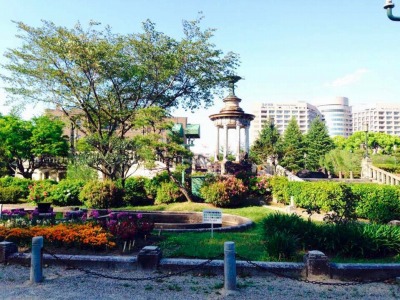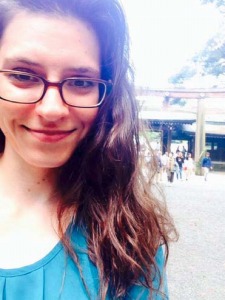Clinical Exchange in Japan
Welcome to Japan and Nagoya University school of Medicine!
Experience Report
Alexandra Robison from Johns Hopkins University School of Medicine, USA
Period:2016/4/18-4/28
Departments: Pediatrics (NICU and Heme/Onc)
First and foremost, I cannot begin to say thank you enough for the incredible opportunity to spend my last two weeks of medical school rotating in Japan at Nagoya University Hospital in the department of Pediatrics. Every team I was fortunate enough to work with welcomed me so warmly and openly, without reservation, and it was an honor to meet and learn from the distinguished faculty at this hospital.
From the day I arrived in Nagoya, I was made to feel like an important guest of the each team. I was allowed to follow the team on rounds in the mornings, observe procedures and clinical decision making moments, attend teaching conferences on Thursday afternoons, and have any and all of my (many) questions answered. Each day was an incredible learning opportunity that allowed me to expand my knowledge base as well as to see how a different medical culture solves the same clinical problems encountered in my own country.
In the Neonatal Intensive Care Unit, I spent my days surrounded by some of the smallest and sickest patients in the hospital. The doctors that took care of them practiced with patience and empathy as well as a great depth of knowledge. I was deeply impressed with how involved physicians are in the care of their patients on the unit. Doctors often draw their own labs, change ventilator settings themselves, and spend much of their time at the patients’ bedside each day (even when they are very busy, which they usually are). Neonatologists in Japan perform their own ECHOs (sometimes as many as four times a day!), and they use cutting edge technology and decades of experience to monitor their patients’ progress (such as continuous electroencephalogram monitoring of brain function/development and pneumatography to assess lung function/adjust ventilator settings). During this time, I was also allowed to go to a Cesarean section for twins to see how newborn babies are evaluated and triaged by the NICU team. What I was unexpectedly able to learn from this was that, no matter what culture you are in, the moment when a mother meets her children for the first time is so beautiful and emotional. I personally believe that the day that you cannot appreciate that special type of beauty is the day you should stop being a doctor.
In the Oncology department, I was so fortunate to meet dozens of children struggling to overcome pediatric malignancies of all kinds. They were so bright and kind, meeting me with smiling faces and a brave outlook on living their lives. I was impressed by their courage in the face of and tolerance for the medical team—these kids have to live in the hospital the entire time they are receiving chemotherapy (unlike in the US, where much of chemotherapy is outpatient). It must be so difficult to be (oftentimes) so far from home, surrounded by strangers, feeling sick and tired. Still, what I found was that these children and their families make the most of the situation: it’s impossible to walk through the Oncology ward and not see the life that pervades the walls. Each room is decorated to make it feel like home for the child it houses. Child Life goes above and beyond to make the ward inviting and to create fun memories for these children. There’s even a school for elementary and middle school-aged children so that they can keep up with their studies while they are sick.
The team that cares for the children in the Oncology department has one of the most difficult jobs of anyone in the hospital. Not only are these children very, very ill, but there are also many children on the service (greater than sixty), and they are all receiving complex chemotherapy regimens or are preparing for/recovering from Bone Marrow Transplants. The medicine here is very complex and comes with a challenging array of complications. It takes very knowledgeable and dedicated physicians to care for this large population on a day-to-day basis. I was extraordinarily impressed by the quality of care these children receive, and it came as no surprise that children come from all over Japan to receive treatment in this cutting edge department. If I were a parent in Japan, this is where I would want my child to be treated.
Overall, coming to Japan was without a doubt the best and most rewarding experience of my elective time during medical school. I am so grateful to the faculty and patients that allowed me to be a part of their lives during that period, and I hope to encourage my peers to seek out this experience in the future. I truly believe that we all become better when we go outside of what we know in our own cultures and strive to learn from each other.


left: Tsuruma Park, with Nagoya University Hospital in the Background
right: Me at Meiji Jingu in Tokyo
Click here to read other stories
Nagoya University Graduate School of Medicine